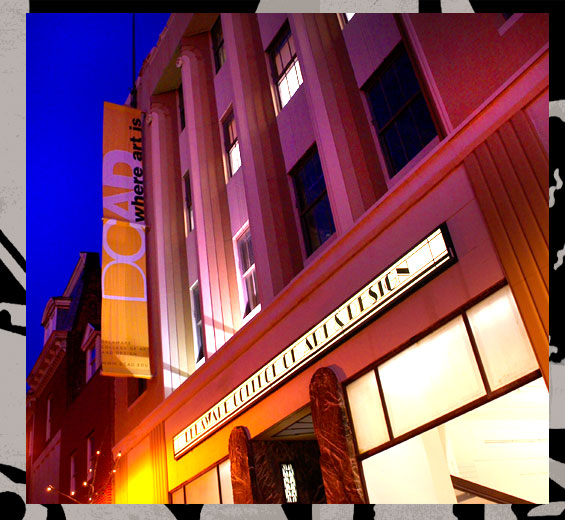Q & A with Nathan Foxton
We caught up with painter Nathan Foxton and asked him to tell us more about his work and specifically, his show "Summercycle (Indiana)" showing in Hank & Dolly's Gallery through August 30. 1. A little background information: Where are you from? When did you start painting? What drew you into painting?
I'm from Rochester, NY which is right on Lake Ontario. While I was actively exploring art growing up and creating imaginary spaces, it wasn't until I went to the Delaware College of Art and Design in Wilmington that I was introduced to oil painting. Their approach to painting by working from observation and revealing the complexity and richness of color drew me in and sold me on pursuing becoming a painter.
2. What artists have influenced your work?
One of the greatest museum visits I've ever had was when there was a Poussin exhibit and Courbet exhbit up at the Metropolitan Museum of Art in New York. The weight of painting's history really hit me. In a contemporary context Antonio Lopez Garcia's paintings have inspired me to make large encompassing spaces. Rackstraw Downes reminds me of how fluid and curvy space is. Artists that inspire me to make clear and concise images include: Kyle Staver, Clint Jukkala, and Kyle Ragsdale.
My professors have impacted my work in a great way, and I've applied to the places I've studied because I respect the work that is made there.
3. Describe your training?
Catherine Drabkin and John Lee taught me how to use oil paint, and to feel color. Elana Hagler and Caleb Goggans gave me some wonderful drawing skills, a tonal understanding in particular. A LCAD grad named Shaun Brock engaged me with an atelier method to constructing and finessing painted objects. When I finished undergrad it was Jeff Morton who taught me to think about art, to explore it as a framework. We'd discuss the writings of Dan Siedell, Gerhard Richter, and William V. Dunning. He challenged me to think into the surface of my paintings.
I have a wide range of influences, and it depends on the aspect.
I enjoy the approach of perceptual painters and provisional painters.
Tim Kennedy has been a solid part of my training this past year, he's given me a new vigor for using the palette knife and keeping my images essential. I'm currently in the MFA program in Painting at Indiana University which has given me a ton of constructive criticism on how to handle structure and space. My conversations with the faculty are lively, and they've helped me to more deeply understand everything from chromatic greys to the history of figurative painting in the 20th century.
4. In what medium are you working for your Hank & Dolly's exhibit?
Oils primarily, though 'Indiana Dunes' is done in pastel.
Indiana Dunes
5. How would you describe the work? Can you talk about how you prepared for this show and how you chose what you would paint?
Summercycle is about my summertime experience in Indiana. Some pieces began last summer and finished before the show, while others were just about this summer, so their are different cycles completing. I'm interested in the unique attributes and resources of a specific location. the landscape and people of Indiana, and Indianapolis in particular are a huge part of that for me. The urban space here is different than that of the row houses of the Atlantic states, or the hilly neighborhoods of Chattanooga.
The painting Treasure Hunters refers to an adventure that might occur in an empty lot in Indianapolis, or on a more realistic approach Landscapers points to cultivation in a similar space. Mapleton Fall Creek and First Fire come from the experience of moving and partaking in urban and relational renewal. This show gave me the opportunity to get in the zone this summer and work on a daily basis. I overcame barriers, maybe created some.
When choosing what to paint I did my best to hone in on the things I enjoy about life in Indiana and collide them with big ideas about painting; I explored adjusting different temperatures of light on my friends, playing with the idea of how a frame influences the experience of an artwork as kitsch/avante garde/high, and experimenting with how big turns of space in local neighborhoods function in small and large formats. Through these elements a loose narrative forms by repeating figures and architecture.
Musical Soul
6. Talk about one of your favorite pieces from this body of work?
"Musical Soul" works well as a small painting. All the marks reference something you can grasp, if only from a distance. The colors work just right to feel that bright midday sun. The world feels complete, but I also relate to it metaphorically as what my summer was about.
7. Anything else you'd like to add?
I'd love to have a conversation with anyone that's interested in the work! I enjoy collaborating and getting to know other artists. and I'm very fortunate that the Harrison Center has been willing to work with me and support me in the journey of figuring out what it means to be a painter in Indiana.




